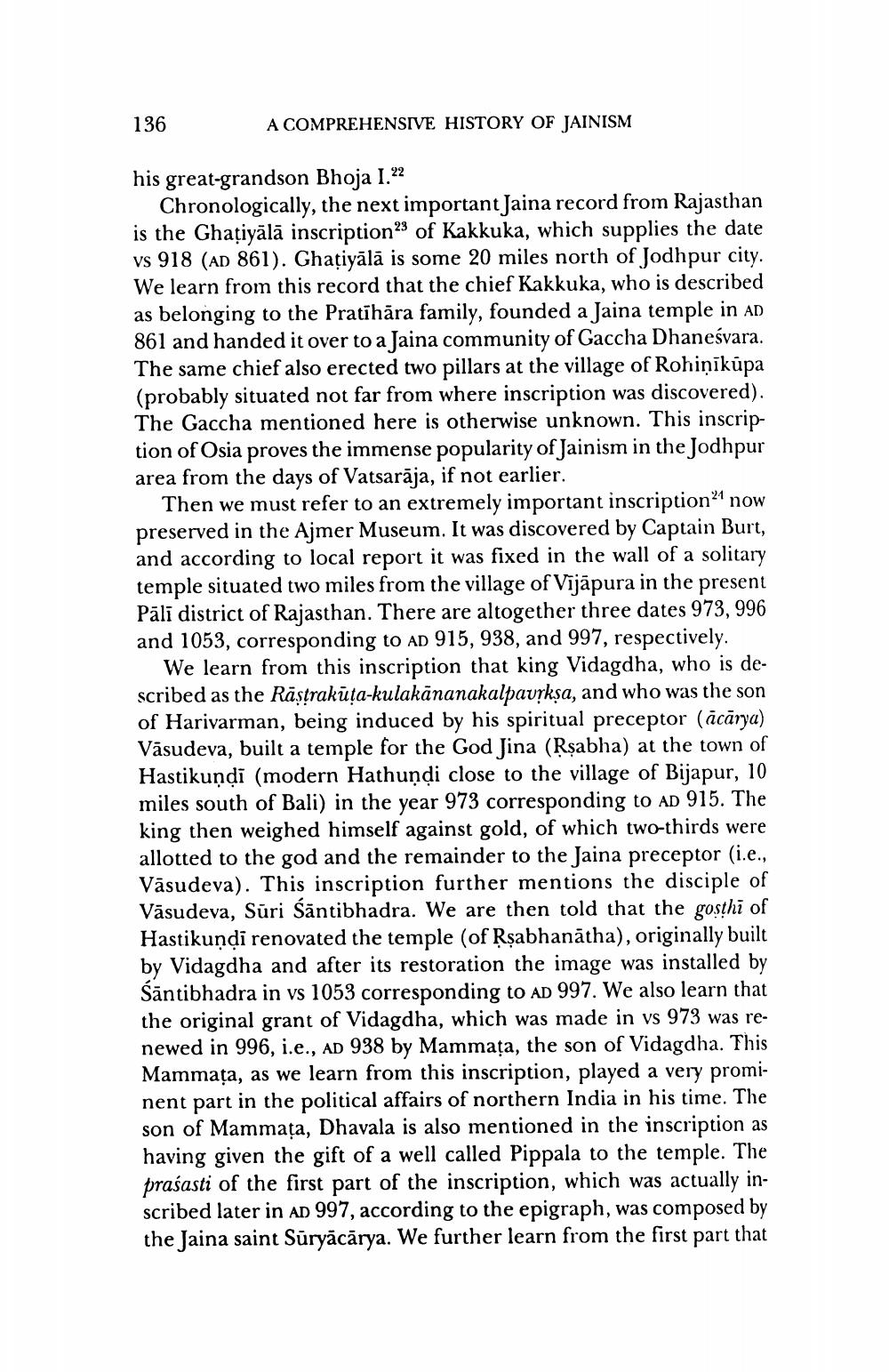________________
136
A COMPREHENSIVE HISTORY OF JAINISM
his great-grandson Bhoja 1.22
Chronologically, the next important Jaina record from Rajasthan is the Ghațiyālā inscription of Kakkuka, which supplies the date vs 918 (AD 861). Ghatiyālā is some 20 miles north of Jodhpur city. We learn from this record that the chief Kakkuka, who is described as belonging to the Pratīhāra family, founded a Jaina temple in AD 861 and handed it over to a Jaina community of Gaccha Dhaneśvara. The same chief also erected two pillars at the village of Rohiņīkúpa (probably situated not far from where inscription was discovered). The Gaccha mentioned here is otherwise unknown. This inscription of Osia proves the immense popularity of Jainism in the Jodhpur area from the days of Vatsarāja, if not earlier.
Then we must refer to an extremely important inscription21 now preserved in the Ajmer Museum. It was discovered by Captain Burt, and according to local report it was fixed in the wall of a solitary temple situated two miles from the village of Vījāpura in the present Pāli district of Rajasthan. There are altogether three dates 973, 996 and 1053, corresponding to AD 915, 938, and 997, respectively.
We learn from this inscription that king Vidagdha, who is described as the Rästrakūta-kulakānanakalpavrksa, and who was the son of Harivarman, being induced by his spiritual preceptor (ācārya) Vāsudeva, built a temple for the God Jina (Rşabha) at the town of Hastikuņņi (modern Hathundi close to the village of Bijapur, 10 miles south of Bali) in the year 973 corresponding to AD 915. The king then weighed himself against gold, of which two-thirds were allotted to the god and the remainder to the Jaina preceptor (i.e., Vasudeva). This inscription further mentions the disciple of Vasudeva, Süri Säntibhadra. We are then told that the gosthi of Hastikundi renovated the temple (of Rşabhanātha), originally built by Vidagdha and after its restoration the image was installed by Säntibhadra in vs 1053 corresponding to AD 997. We also learn that the original grant of Vidagdha, which was made in vs 973 was renewed in 996, i.e., AD 938 by Mammața, the son of Vidagdha. This Mammaţa, as we learn from this inscription, played a very prominent part in the political affairs of northern India in his time. The son of Mammața, Dhavala is also mentioned in the inscription as having given the gift of a well called Pippala to the temple. The praśasti of the first part of the inscription, which was actually inscribed later in AD 997, according to the epigraph, was composed by the Jaina saint Suryācārya. We further learn from the first part that




